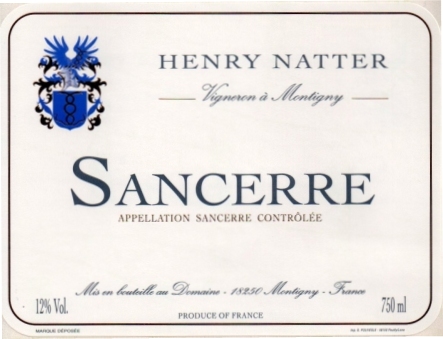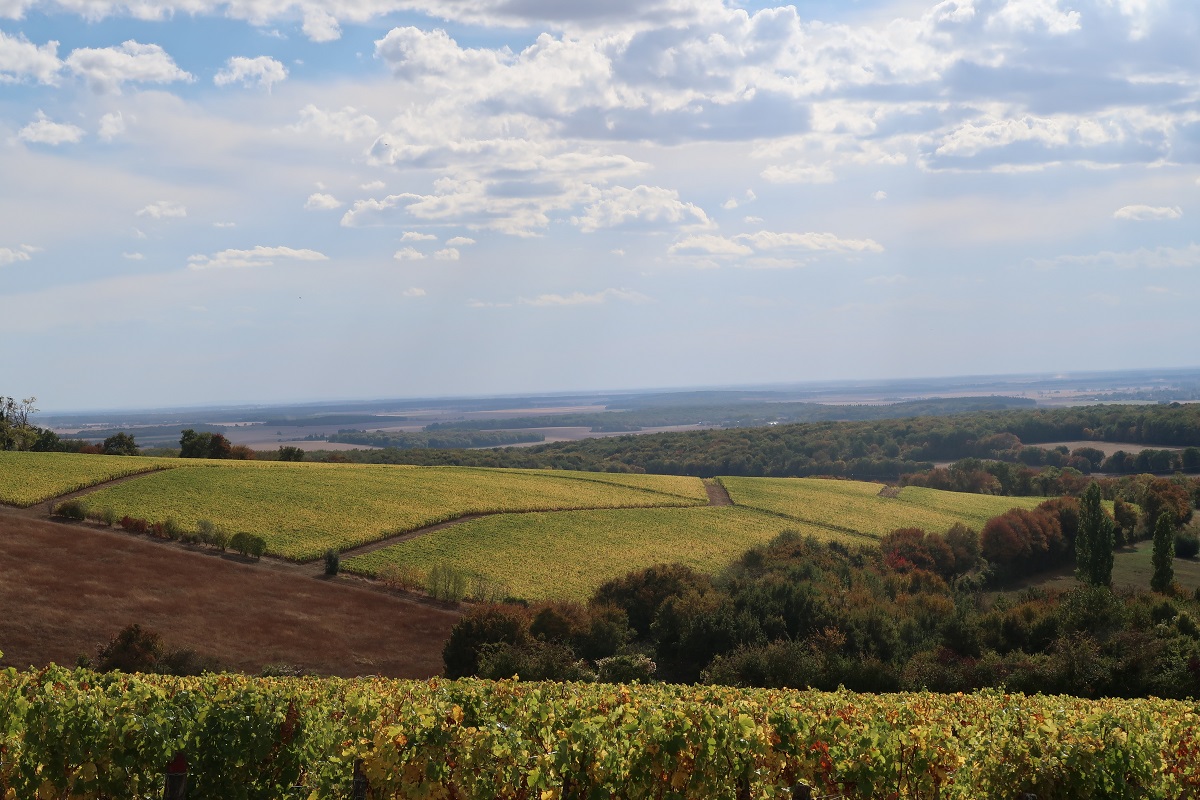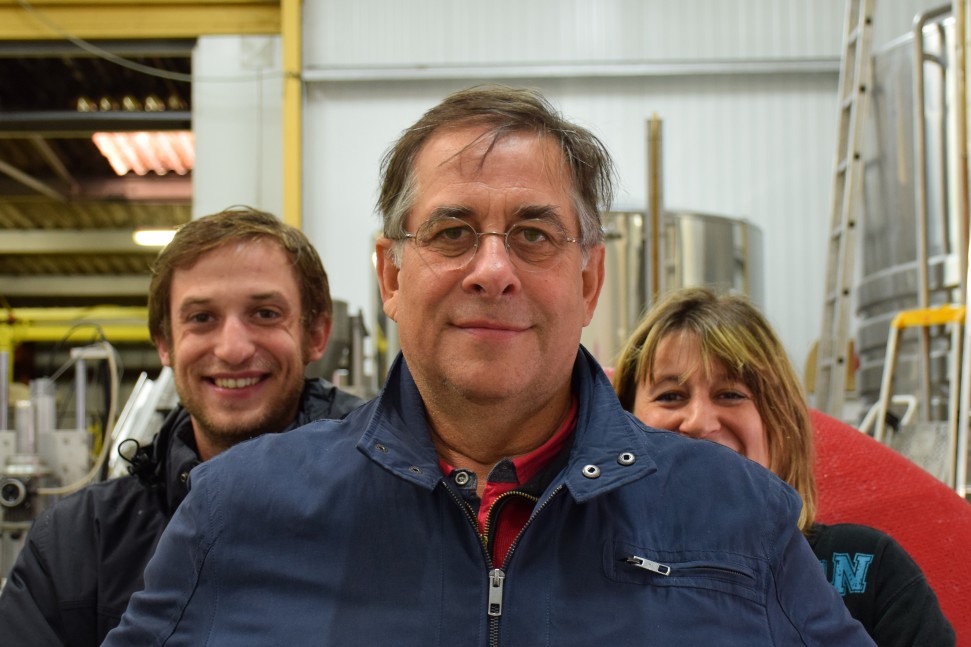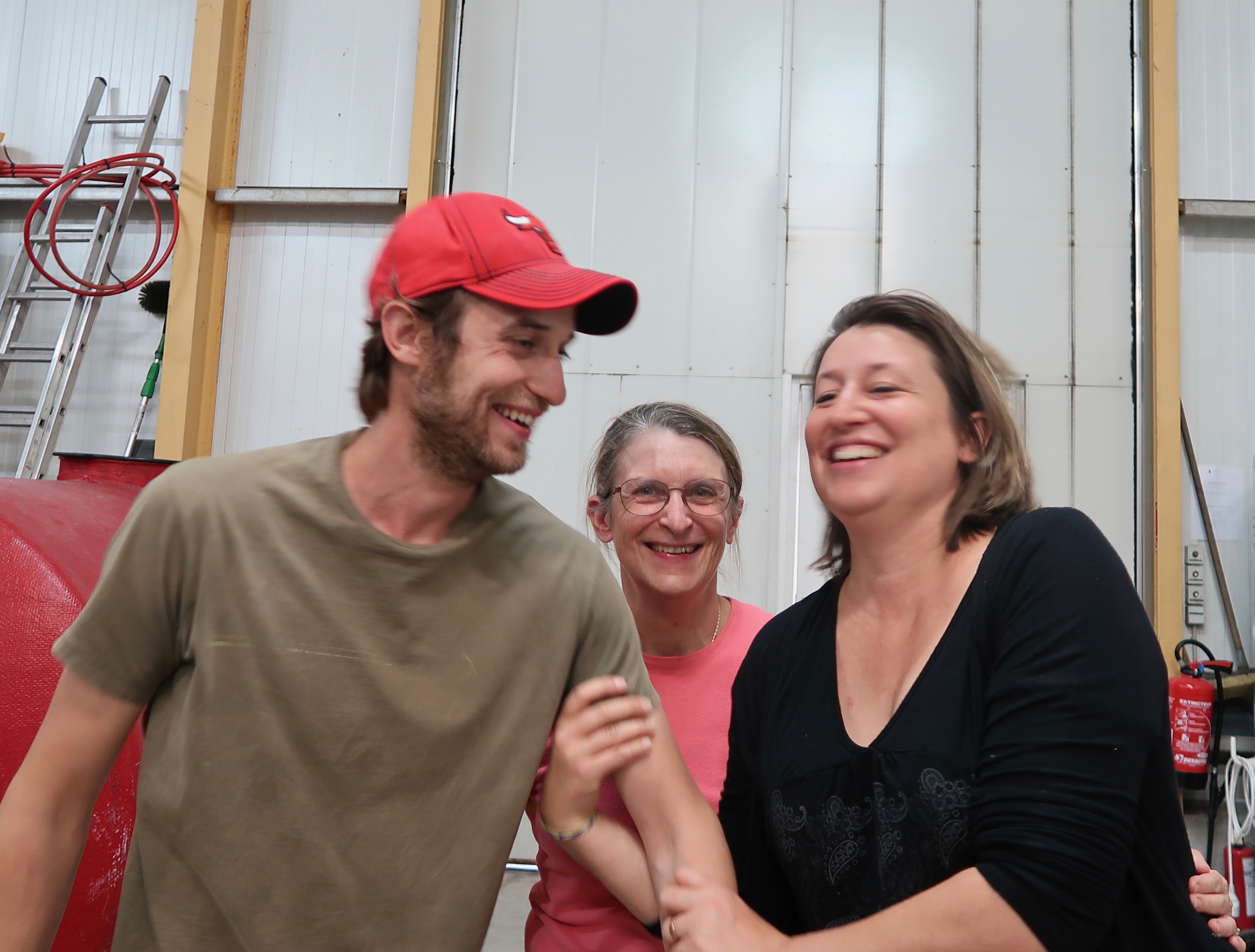Henry Natter, Sancerre (Montigny)

| Country & Region | France, Loire Valley |
| Appellation(s) | Sancerre |
| Producer | the Natter family |
| Founded | 1974 |
| Website | www.henrynatter.com |
Henry and enologist Cécile Natter started Domaine Henry Natter in 1974 from scratch, beginning with a family hectare in Montigny. They married, planted half of that hectare on a hillside running up behind the village, and started a family. This was in Sancerre’s southwestern heights, an area widely planted to vines before phylloxera. Afterward, apart from a few scattered vineyards, the viticultural reconstruction generally passed these hillsides by and the area became a breadbasket for the local grain farmers. The Natter family domaine was the first on this side of the modern appellation of Sancerre and remains the only winemaking domaine in Montigny, a terroir noted for its preponderance of terres blanches, or Kimmeridgian Marls. (Kimmeridgian makes an arc from the northern hilltops curving around to the western edge of the appellation; caillottes, or Oxfordian limestone, is found in the center of the appellation; and flint or silex is found along the fault line running north-south through the town of Sancerre itself.) This soil gives great power to the wines, and a remarkable ability to age without oxidation. Stored properly, a top twenty-year-old Natter Sancerre retains astonishing freshness while evolving down to its elemental, mineral base. Almost no one thinks of old Sancerre, which is a shame because the good ones can amaze.

Today the domaine farms 57 acres of vines. The breakdown is 47 acres of Sauvignon and 10 acres of Pinot Noir. From the beginning in 1974, organic composts and homeopathic applications have been used in place of chemical fertilizers. Fermentations can be spontaneous or done with neutral yeast (depends on health of the grapes), but they always take place in huge old casks, a.k.a., foudres.

In 2016 Henry retired and his son Vincent took over day to day responsibilities. He manages the vineyard work and works in the cellar alongside his mother Cécile, aided by his sister Mathilde (there they are below). In their employ is a Hmong. He is the nephew of a married couple who had been relocated from Laos to a Hmong refugee camp near Bourges in the 1980s. This couple originally came to the domaine as vineyard workers, and they stayed on for nearly a decade before their nephew assumed their responsibilities. Many more Hmong come to help during the harvest.

The Wines
| Wine | Blend | Description |
|---|---|---|
| Sancerre blanc | Sauvignon Blanc | This is the domaine’s horse, a wine that never fails to make the cut for Bettane & Desseauve’s annual Guide des Vins, France’s most serious guide. The Guide notes the "perfect maturity" the Natters obtain from their grapes, and that maturity, coupled with native yeast fermentation in foudre, accounts for the intense aromas and rich texture of the wine. It spends a minimum of six months aging in the big casks. Production averages 8,500 cases. |
| Sancerre Cuvée François de la Grange | Sauvignon Blanc | The base for this wine always comes from an old vine parcel of 50+ years, and a culling of foudres takes place in the cellar. The wine that is bottled under this label undergoes a nine to twelve-month élevage entirely in the big casks. Production averages 1,650 cases. As for the name, according to Cécile Natter: "At first, François de la Grange (1554-1617), Baron of Montigny, was in the personal service of the King Henri III. He then became governor of Berry, Blois, and Gien, Knight of the Order of the Holy Spirit, and Marshal of France in 1595. His influence was of great importance in the development of the village of Montigny. It is therefore in homage to this powerful historical figure that we dedicate this cuvée; it, too, possesses a certain power and a large personality." |
| Sancerre rosé | Pinot Noir | About half of this wine undergoes élevage for three months in foudre before bottling. Cécile did part of her winemaking training at Domaine Ott in Provence, and she has a knack for rosé that she's passing onto her son Vincent. They make a fresh, well-tailored rosé from the north, brought up in stainless steel. |
| Sancerre rouge | Pinot Noir | Hey, before you scoff at Pinot Noir from Sancerre, remember that Sancerre was once the western boundary for the Duchy of Burgundy back in the Duchy's heyday. There's been Pinot growing in Sancerre's hills for ages! You should check this out. Raised entirely in tank, this is the only wine to undergo malolactic fermentation at the domain. The Natters' rouge has that unmistakable limestone lift in the back of the palate, and as such this is a quintessential Pinot Noir from Sancerre's Kimmeridgian soils. It's not just drinkable; it's gulpable. |